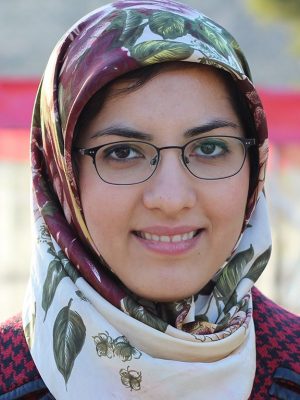
Samaneh Azadi
University of California, Berkeley
PhD Candidate
Samaneh Azadi is a Ph.D. candidate in Computer Science at UC Berkeley, advised by Prof. Trevor Darrell. Her research is focused on machine learning and computer vision. Samaneh is particularly interested in compositional and structural generative adversarial modeling and has developed algorithms for learning the representative distribution of various visual domains. She has spent time as a research intern at Google Brain and Adobe Research, and her research is supported by the Facebook Graduate fellowship. She has also helped in raising the visibility of underrepresented groups by organizing the Women in Computer Vision workshop twice at CVPR16 and CVPR17.
Research Abstract:
It is still a challenge to reliably analyze and understand the enormous amount of easily accessible real-world data. Generative Adversarial Networks (GANs) are one of the most promising approaches that recently have made remarkable enhancements in learning complex data manifolds by generating realistic samples. I develop algorithms to learn the distribution of a wide range of challenging visual domains using GANs: 1. We developed the first end-to-end network that learns the font manifold of the English alphabets and automatically synthesizes the missing glyphs from a few observed letters. This work was well received by the artists and font designers as one of the most innovative presented works at the Adobe MAX Conference 2018; 2. In natural images, with diverse objects and scene layout structures, generating high-fidelity and diverse images is much more challenging. We proposed an approach to improve the quality of the GAN generated samples using probabilistic rejection sampling; 3. GANs generally ignore the fact that a natural image is a 2D projection of a composition of multiple objects interacting in a 3D visual world, thus they cannot fully capture the explicit spatial interaction between multiple entities present in a scene. To address this challenge, we proposed a novel framework consisting of two conditional GANs to compose a pair of objects. I am currently pursuing my research to enable the missing feature of current state-of-the-art GANs in modeling large-scale natural images with diverse multi-object structures. Besides pushing for theoretical advancements in GANs, I am passionate about its artistic applications leading to new collaborative tools across art and computing.